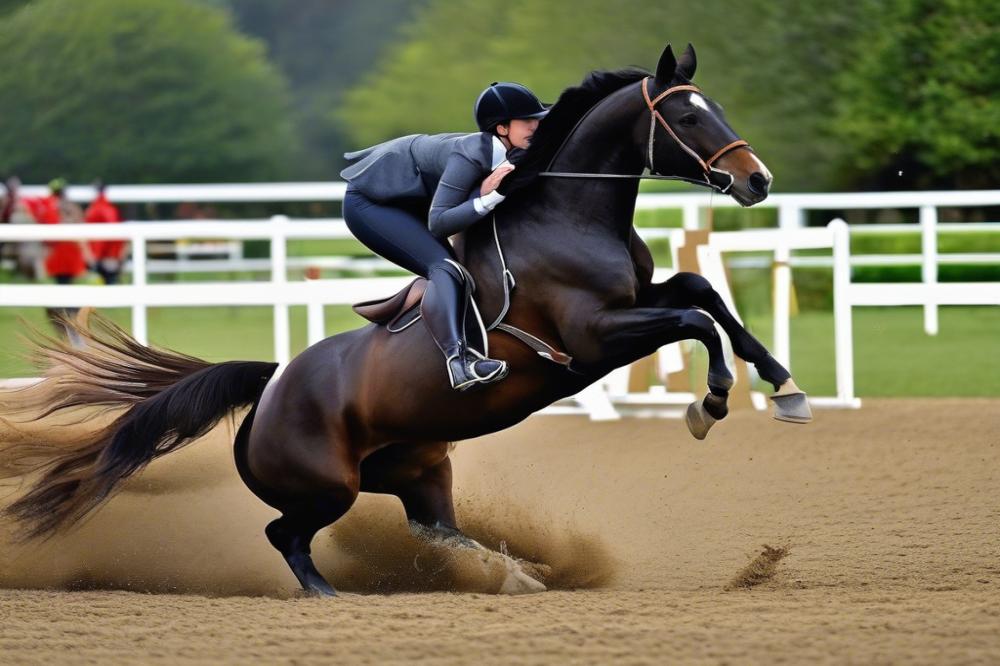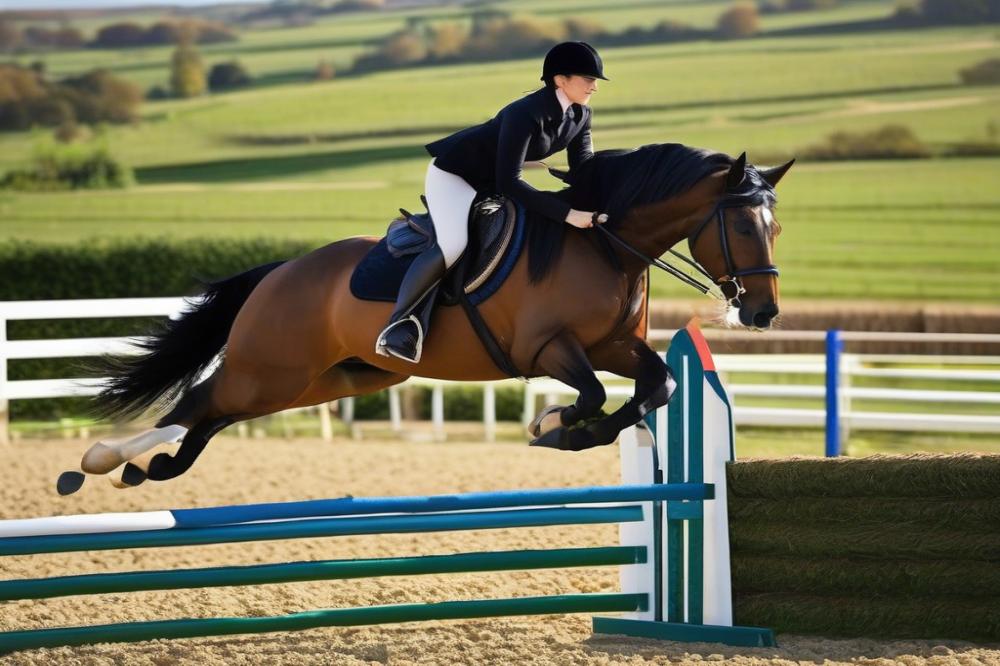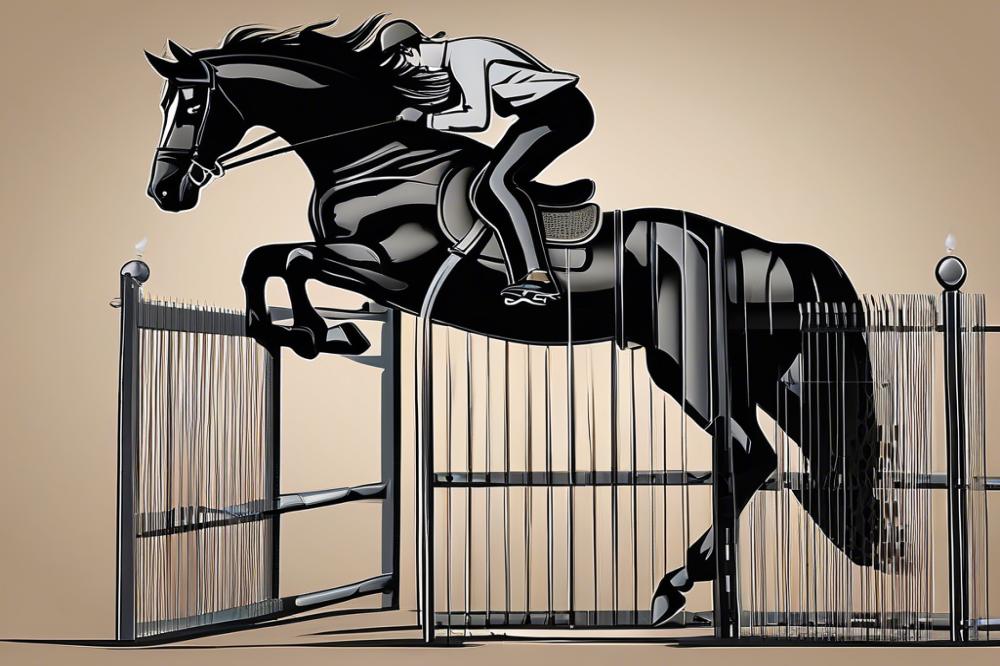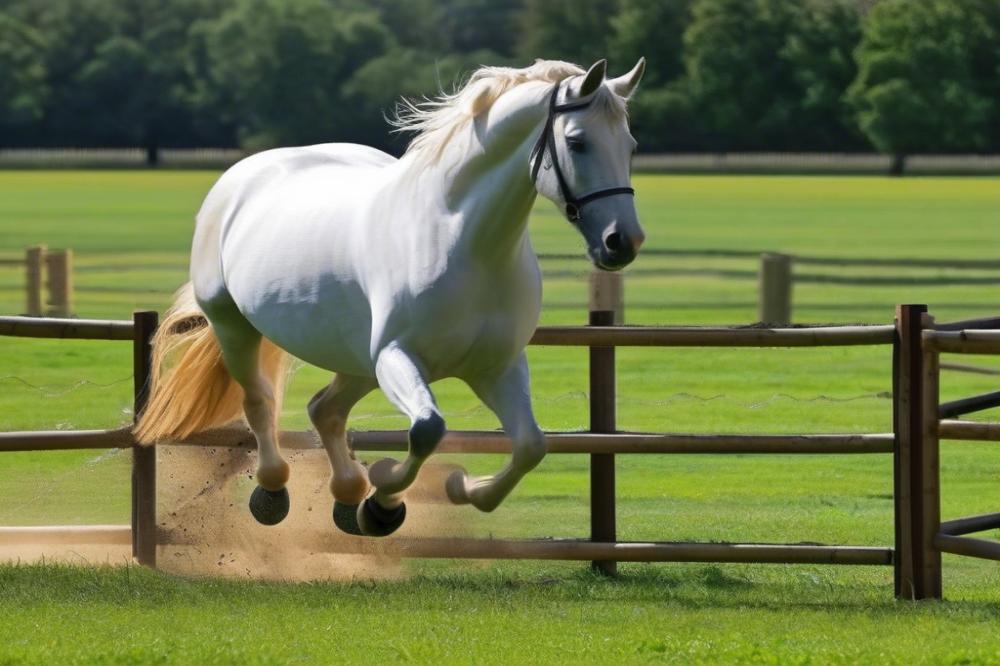What is Crow Hopping in Horses?
Crow hopping can be quite the spectacle, but not always for the right reasons. Picture it: you’re out enjoying a lovely ride on your trusty steed, maybe a spirited bay horse, when suddenly, it feels like your mount is trying to launch you into the sky! Crow hopping refers to the behavior where a horse suddenly leaps or bucks with its front legs, often while their back end stays low to the ground. It can catch even the most experienced riders off guard. Think of it as a horse’s version of a young child having a tantrum—sometimes they just need to let off a little steam.
Importance of Addressing Crow Hopping
Addressing this behavior is crucial for many reasons. First and foremost, the safety of both the rider and the horse must come first. A crow-hopping horse can lead to falls and injuries, which surely no one wants during a leisurely ride. Moreover, it can be a sign of underlying issues, whether physical discomfort or psychological distress. Ignoring the problem could lead to bigger issues down the road. Engaging in proper horse care can help identify these underlying factors before they become serious. Keeping your equine companion happy and healthy should always be a priority!
Impact on Riding and Safety

When it comes to horse riding, the last thing anyone wants is to be unexpectedly thrown off balance due to crow hopping. Picture yourself at a show, performing flawlessly one moment, only to find yourself grappling with an unexpected hop the next. It certainly puts a damper on the experience. Not to mention, it can hinder your progress in riding skills and confidence. If you’ve ever read about the camel vs horse size, you might imagine the difference in their temperament, too. Horses like to express themselves, whether through graceful strides or sudden leaps. Proper horse training not only helps in refining riding skills but also in managing behaviors like crow hopping.
To sum it up, dealing with crow hopping isn’t just about stopping unwanted behavior. It’s about opening the lines of communication between horse and rider. With the right equestrian techniques and crow hopping solutions, you can build a bond of trust that keeps both of you safe and happy. After all, no one wants their riding adventures to feel like navigating a roller coaster!
Understanding Crow Hopping

Definition of Crow Hopping
Crow hopping refers to a specific type of jump or behavior in horses. When a horse demonstrates this, it typically springs into the air while simultaneously kicking out with its hind legs. This isn’t a graceful leap; it’s more of a disconcerting hop. Riders often find this surprising and a bit alarming. It can feel like the horse is trying to throw you off. While it may look exciting, it’s usually a sign that something isn’t quite right.
Common Causes of Crow Hopping
Several factors can spark this behavior. Pain or discomfort often triggers crow hopping in a horse. This could come from an injury, an ill-fitting saddle, or even general soreness. Additionally, fear can play a big role. A sudden noise may startle a horse and cause it to react abruptly. Sometimes, a lack of focus during horse riding can also lead to this response. Anxiety over unfamiliar environments or situations can make a horse want to crow hop as a way to express its unease.
Physical vs Behavioral Triggers
Understanding the difference between physical and behavioral triggers is crucial. Physical triggers might include ailments like back pain or leg injuries. These issues can be serious and may require immediate horse care or veterinary attention. Behavioral triggers, on the other hand, stem from the horse’s mental state. Stress, lack of training, or even the presence of other animals can lead to crow hopping. Both triggers can overlap. It is important to examine the whole scenario. When assessing equine behavior, patience and observation are vital. By identifying what’s causing the problem, you can figure out the best crow hopping solutions to help your horse feel safer and more secure.
Assessing the Situation

Identifying Signs of Crow Hopping
When a horse starts crow hopping, it may seem like they’re trying to dance. Often, you’ll notice them bouncing as if they have springs in their legs. This behavior typically means they’re feeling uncomfortable or frustrated. Spotting early signs can save you from bigger problems later. Look for tightness in their body posture or an anxious look in their eyes. Sometimes, they’ll swish their tails or pin their ears back—those are big red flags. If your horse acts like a pogo stick, it’s time to pay attention!
Evaluating the Horse’s Health and Fitness
New aches and pains can lead a horse to behave unexpectedly. Always consider their health when something unusual pops up. Take a close look at their weight and muscle tone—are they in shape for the work you expect them to do? Even a small issue can cause discomfort during horse riding. Check hoof health, as sore feet can lead to skipping or hopping. Consulting with a vet can make a world of difference if you suspect something’s off. Never downplay the importance of regular check-ups and good horse care.
Recognizing Environmental Factors
Look around! The environment can have a massive impact on a horse’s behavior. Are there distractions like loud noises or sudden movements nearby? Maybe there’s a new horse in the barn, or perhaps the ride path is different from usual. Uneven terrain could also contribute to some crow hopping behaviors. Adjustments in riding grounds or changes in weather can lead to a horse feeling unsettled. Always consider how your horse’s space plays a role in their mood and actions. It’s a bit like us humans; we don’t like surprises either!
Preventive Measures
Importance of Proper Training
Training a horse is much like building a house. You need a solid foundation to make everything else work smoothly. Many issues can arise from insufficient training, including unwanted behaviors. Crow hopping, for instance, often stems from confusion or fear. When a horse knows what to expect, they’re less likely to react unpredictably. Basic commands and cues should come first. This establishes trust. Riders play a crucial role in guiding their horses through exercises that promote comfort and understanding. It’s like learning a dance together — you can’t just jump into advanced moves without mastering the basics.
Establishing a Solid Foundation
Laying a good groundwork isn’t just about physical skills. Mental preparation is equally important. Horses, just like people, need to feel secure before they can perform well. Socializing with other horses can help improve their confidence. Positive experiences create well-adjusted equine behavior. For horse riding enthusiasts, patience is key. Slow and steady wins the race here. Take time to introduce your horse to various environments, sounds, and sights. Think of it as taking your horse on a field trip. These small steps make a big difference in the long run.
Incorporating Desensitization Techniques
Desensitization can do wonders for a horse’s mindset. This technique involves exposing the horse to things that may typically make them anxious. Items like tarps, umbrellas, or even clapping hands can be introduced gradually. Start small and keep things light-hearted. It’s important to make it fun and engaging for your horse. Remember, horses are sensitive creatures, and unexpected changes can throw them off balance. The goal is to help them feel calm and confident. Over time, they’ll learn that these unusual objects pose no threat. A relaxed horse is far less likely to resort to crow hopping solutions.
Training Techniques
Effective Groundwork Strategies
Groundwork is often the unsung hero in horse training. It lays the foundation for a solid riding relationship. Start with some simple lunging exercises. This helps the horse understand your cues without the added pressure of a rider on their back. Use a lunge line and encourage the horse to move away from you. When they listen, reward them with a calm voice or a pat.
Establishing clear boundaries is crucial. Horses need to know what you expect from them. If you sense tension building, try to redirect that energy. You might use circles or transitions to keep their focus. Introducing obstacles can also spice things up. Horses love to be challenged, and it makes groundwork more engaging.
Patience is your best friend here. Rushing can lead to more crow hopping solutions being needed down the road. If a horse gets too antsy, take a step back and breathe. Sometimes, a little time is all you need to reset.
Riding Techniques to Manage Crow Hopping
Once you’re on the horse, communication is key. Using your seat effectively can help. Sit deep and balanced. A strong, steady position can prevent those sudden leaps. Remember, your legs are your best friends. Keep them soft yet engaged. That way, you can guide the horse smoothly.
Be proactive, not reactive. If you sense a crow hop coming, try to gently pull them down into a controlled pace. You can practice transitions from walk to trot, or trot to canter. These shifts keep the horse’s focus and control in check. Maintaining rhythm is essential. The more relaxed they feel, the less likely they are to crow hop.
Imagining you’re a tree can help. Be solid and grounded. Focusing on staying steady gives your horse a sense of security. Plus, it helps them feel like they can rely on you during moments of uncertainty.
Utilizing Positive Reinforcement
Positivity can work wonders in horse training. Horses respond well to rewards. When they listen or behave correctly, give them a little treat or praise. Simple rewards can boost their confidence. It builds a more positive association and encourages good equine behavior.
Try incorporating breaks into your riding routine. If a horse behaves without crow hopping, make it a big deal! Celebrate those small victories. You could say something like, “Great job, buddy!” with a scratch on the neck. It reaffirms that they are doing the right thing.
Humor comes in handy, too. Share a laugh with your horse. Sometimes their quirks are just their way of expressing themselves. If they hop, don’t lose your cool. Just adapt and provide gentle guidance instead. Your calmness can help soothe their nerves.
Remember, horse care is all about understanding the animal. The more you connect with your horse, the smoother your rides will be. You’ll create a partnership based on trust and respect.
Seeking Professional Help
When to consult a trainer or veterinarian
If your horse is crow hopping, it might be time to get some outside help. Trainers can often spot issues that we might miss. If your horse shows signs of pain or discomfort, don’t wait. Always reach out to a veterinarian. They can check for any physical problems that could be causing strange equine behavior. A well-timed visit can make all the difference.
Finding qualified equine professionals
Searching for a good trainer or vet isn’t as hard as it seems. Start by asking fellow horse enthusiasts for recommendations. Online reviews can also offer insights into their skills. Look for someone with experience in horse care and training, especially with crow hopping solutions. You want someone who has a solid track record. Checking their credentials is a smart move. An accredited professional usually knows the ropes. A face-to-face chat can reveal a lot about their approach and quirks.
Benefits of specialized training programs
Investing in a training program tailored for your horse can yield great results. Specialized programs often focus on specific equestrian techniques. They help tackle problems directly, giving you and your horse a clearer path forward. Experienced trainers understand different horse riding styles and adapt training accordingly. Plus, learning alongside others can be motivating. Watching how others handle challenges can spark new ideas. The right program might just provide the tools you need to turn your horse into a happy, confident partner.
Monitoring Progress
Keeping a Training Journal
Writing down details can make a big difference. Your training journal acts like a map in the wild. Jot down every session, noting what worked and what didn’t. For example, write about the equine behavior you observed during each ride. This helps spot patterns over time. Remember, every day won’t be perfect, and that’s okay! Observations, no matter how small, can help you figure out if you’re making progress.
Setting Realistic Goals
Dreaming big is great. However, it’s important to set achievable goals to keep your motivation high. Start small. Focus on one issue at a time, like improving groundwork before getting back in the saddle. Breaking things down into bite-sized pieces can make horse training feel less overwhelming. Think of it as training for a marathon, not a sprint! Celebrate little victories! Those small wins will keep spirits up for both you and your horse.
Regularly Assessing Behavior Changes
Keep an eye on how your horse responds to training. Changes in behavior can tell you a lot. Notice if your horse seems calmer or more confused during rides. Sometimes, simple adjustments in equestrian techniques can lead to big results. Discuss what you observe with a trainer or fellow rider. Two sets of eyes often catch what one might miss. Use this feedback to tweak your approach whenever necessary. Tracking progress doesn’t have to be boring; it can be an adventure for both you and your horse!
Wrapping It All Up
Stopping a horse from crow hopping can feel like trying to peel a stubborn banana. You might feel frustrated at times, but keep your chin up! Let’s recap a few key strategies that can really make a difference. First, always begin by understanding the root causes of this behavior. Is your horse feeling pain? Is it reacting to something in its environment? Observing the horse can provide you with valuable clues.
Next, remember the importance of groundwork. You may think of it as laying the bricks of a sturdy house. When you spend time building trust and communication on the ground, riding becomes much more enjoyable. Consistency is vital. You wouldn’t expect a plant to grow overnight, would you? Similarly, your horse benefits from regular practice and positive reinforcement.
Patience is the name of the game. While some may wish for instant results, the road to success is often winding and lengthy, like a country road that leads to a beautiful sunset. Keep calm and try to enjoy the journey instead of focusing on the destination. When things get tough, remember that even the best horse riders had their share of challenges. Everyone has to start somewhere, whether it’s preparing for horse kid shows or simply mastering the basics.
Establishing a positive horse-rider relationship is essential. Think of your partnership as a dance—each partner must know their moves, but also be willing to adapt. When trust is present, your horse is less likely to crow hop, and you’ll find that your rides are smoother than Elmer’s glue made from horses! You see, it’s all about creating an environment where your horse feels safe and secure.
As you work through these strategies, remember that hiccups along the way are completely normal. Each small step you take builds the foundation for greater confidence and understanding. So, embrace the process with humor and kindness, and your bond with your horse will only grow stronger. Happy riding!



